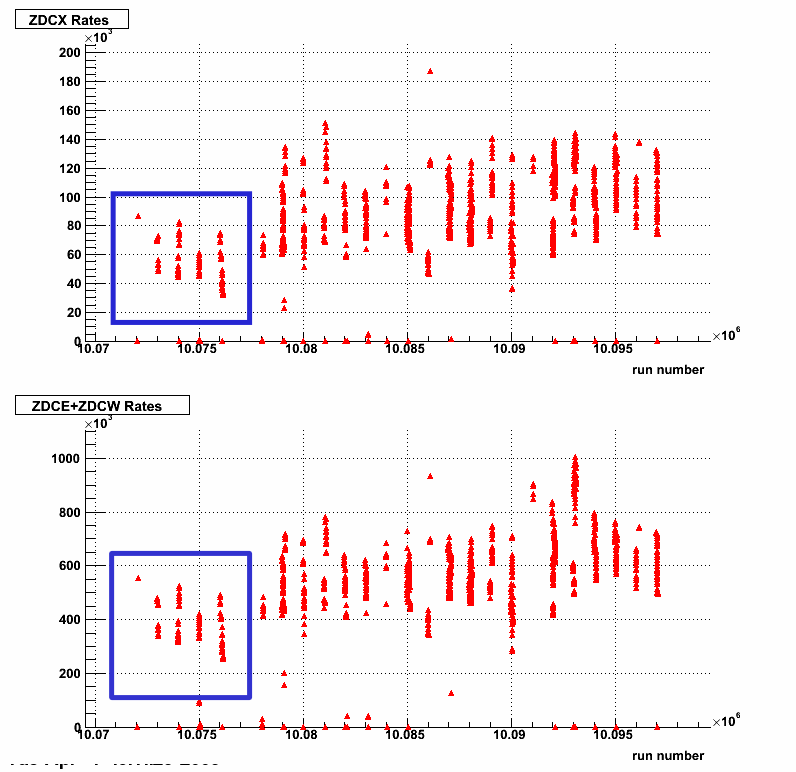- My blog
- Post new blog entry
- Top bloggers
- Recent posts
Sort by:[Date]
2006 Calibration Uncertainty
Updated on Wed, 2009-04-15 13:27. Originally created by mattheww on 2009-04-09 14:58.Adam, Alan, Mike, and I have been working on reducing the uncertainty on the BTOW Calibration for 2006.
Draft 1.0 - Neutral Pion Paper 2005 (Cross section, ALL, Mean momentum fraction)
Updated on Thu, 2009-04-09 11:01. Originally created by surrow on 2009-04-09 09:01.Draft 1.0 - Neutral Pion Paper 2005 (Cross section, ALL, Mean momen
State of Run 7 TPC Sector Alignment
Updated on Tue, 2009-04-07 23:55. Originally created by genevb on 2009-04-07 23:55.One of the possibilities for contributing to systematic pt-dependent biases of h-/h+ ratios can be alignment of TPC sectors.
zdc rates vs runnumber in run9
Updated on Tue, 2009-04-07 15:30. Originally created by seelej on 2009-04-07 15:30.
Abstract for GHP09 conference in Denver
Updated on Fri, 2009-04-17 13:20. Originally created by fersch on 2009-04-07 13:35..pdf file is attached
Rotator current adjustment during fill 10505
Updated on Tue, 2009-04-07 13:03. Originally created by ogrebeny on 2009-04-07 12:59.Fractional transverse component before adjustment:
Slides for P. Pile Meeting, Tuesday, April 07, 2009
Updated on Sun, 2009-04-12 20:35. Originally created by surrow on 2009-04-07 11:27.Slides for P. Pile Meeting, Tuesday, April 07, 2009
Analyzing ZDC Data after Spin Rotator Changes
Updated on Wed, 2009-04-08 11:49. Originally created by aliceb on 2009-04-07 10:59.Introduction
scheduler tricks
Updated on Thu, 2012-06-21 14:50. Originally created by balewski on 2009-04-07 10:43.- To see full details of the job que do:
- condor_q -long -submitter balewski
- To
TPC QA, 500 GeV pp
Updated on Sat, 2009-06-13 05:24. Originally created by balewski on 2009-04-06 13:52.-
TPC performance. L2W-tagged events, day 92,93,94. Only primary vertex, only prim tracks.
